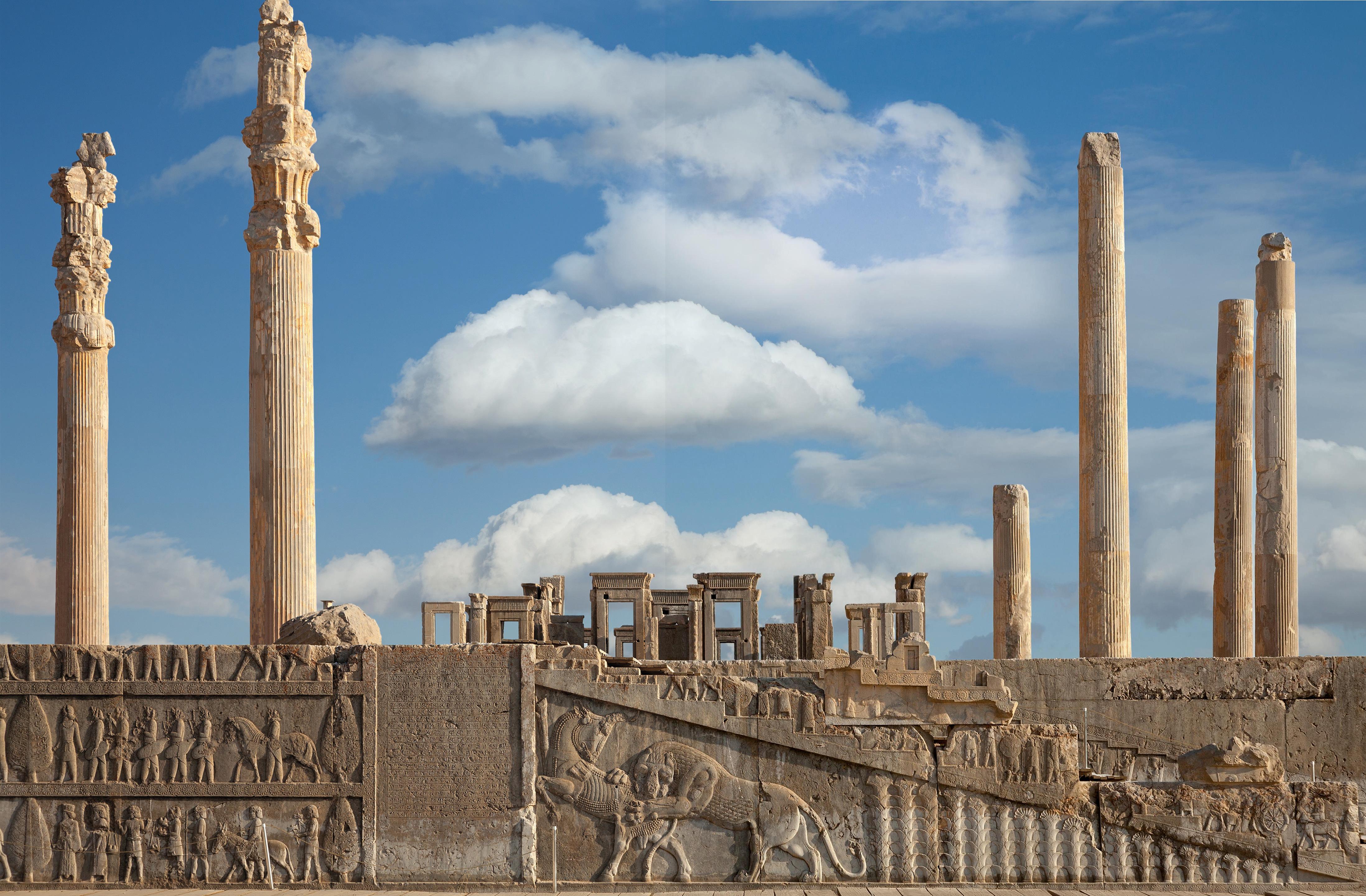
As visitors to Persepolis, capital of the Persian Achaemenid Empire, entered the city, they would approach a stone terrace on which a palatial precinct rose 40 feet above the fertile flatlands at the foot of Kuh-i-Rahmat, the Mountain A of Mercy. Bearing gifts from their homelands-perhaps a metal chalice or a braying donkey-they would ascend 63 limestone steps, pivot on a landing, then climb another 48 steps to an imposing threshold known since antiquity as the Gate of All Nations. Flanking the four-story-tall gate were statues of lamassu, winged bulls with human heads and curly beards.
The great city was founded by the Persian king Darius I around 518 B.C. in present-day Iran and construction continued for nearly 200 years. For the duration of its existence, the ever-expanding metropolis was a royal estate, a bustling construction site, and an urban center that housed as many as 45,000 residents nourished by surrounding orchards and farmlands.
Glazed bricks adorned the entryway’s interior, and two identical trilingual texts, inscribed in Old Persian, Elamite, and Babylonian, read: “I, Xerxes, the great king, king of kings, king of the countries possessing many kinds of people, king of this great earth far and wide, the son of Darius the king, the Achaemenid.” Travelers would have continued through the gate onto the royal terrace, a massive 30-acre platform filled with spacious meeting halls and palaces where reliefs depicted kings receiving attendants and taming fierce creatures. The walls would have glowed from the hues of glazed tiles, murals, and inlaid gold, silver, and precious minerals. Painted with especially vibrant blues, Persepolis was an oasis that stood out from the hazy plains, says archaeologist Alexander Nagel of the Fashion Institute of Technology.
この記事は Archaeology の July/August 2023 版に掲載されています。
7 日間の Magzter GOLD 無料トライアルを開始して、何千もの厳選されたプレミアム ストーリー、8,500 以上の雑誌や新聞にアクセスしてください。
すでに購読者です ? サインイン
この記事は Archaeology の July/August 2023 版に掲載されています。
7 日間の Magzter GOLD 無料トライアルを開始して、何千もの厳選されたプレミアム ストーリー、8,500 以上の雑誌や新聞にアクセスしてください。
すでに購読者です? サインイン
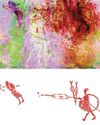
A Very Close Encounter
New research has shown that human figures painted in red on a rock art panel in central Montana depict individuals engaged in a life-or-death encounter during an especially fraught historical moment.
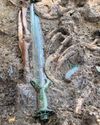
A Sword for the Ages
A zigzag pattern, now tinged with the green-blue patina of oxidized metal, adorns the octagonal hilt of a rare sword dating to the Middle Bronze Age in Germany (1600-1200 B.C.) that was recently excavated in the Bavarian town of Nördlingen.
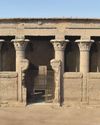
Ancient Egyptian Astrology
For centuries, layers of soot have coated the ceilings and columns in the entrance hall of Egypt's Temple of Esna. Now, an Egyptian-German team of researchers, led by Hisham El-Leithy of the Egyptian Ministry of Tourism and Antiquities and Christian Leitz of the University of Tübingen, is restoring the temple's vibrant painted reliefs to their original brilliance.
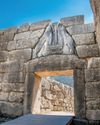
BRONZE AGE POWER PLAYERS
How Hittite kings forged diplomatic ties with a shadowy Greek city-state
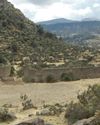
RITES OF REBELLION
Archaeologists unearth evidence of a 500-year-old resistance movement high in the Andes

Secrets of Egypt's Golden Boy
CT scans offer researchers a virtual look deep inside a mummy's coffin

When Lions Were King
Across the ancient world, people adopted the big cats as sacred symbols of power and protection

UKRAINE'S LOST CAPITAL
In 1708, Peter the Great destroyed Baturyn, a bastion of Cossack independence and culture

LAPAKAHI VILLAGE, HAWAII
Standing beside a cove on the northwest coast of the island of Hawaii, the fishing village of Lapakahi, which is surrounded by black lava stone walls, was once home to generations of fishers and farmers known throughout the archipelago for their mastery of la'au lapa'au, or the practice of traditional Hawaiian medicine. \"

A MORE COMFORTABLE RIDE
Although the date is much debated, most scholars believe people 5,000 years ago. For thousands of years after that, they did so without saddles. \"In comparison with horse riding, the development of saddles began relatively late, when riders began to care more about comfort and safety in addition to the horse's health,\" says University of Zurich archaeologist Patrick Wertmann.